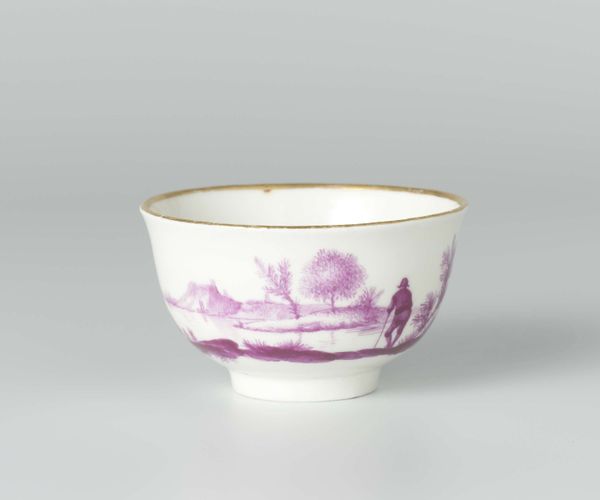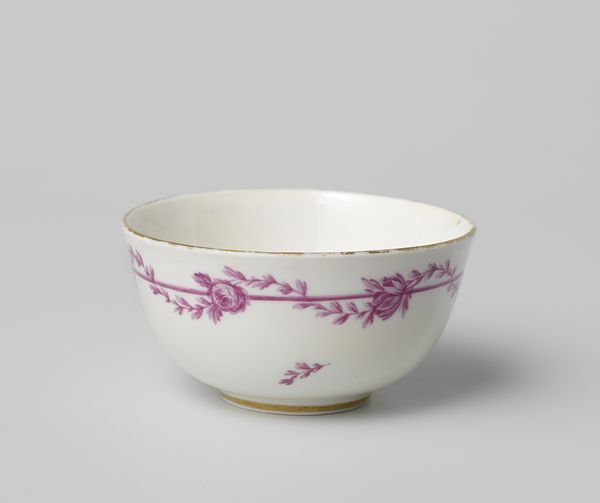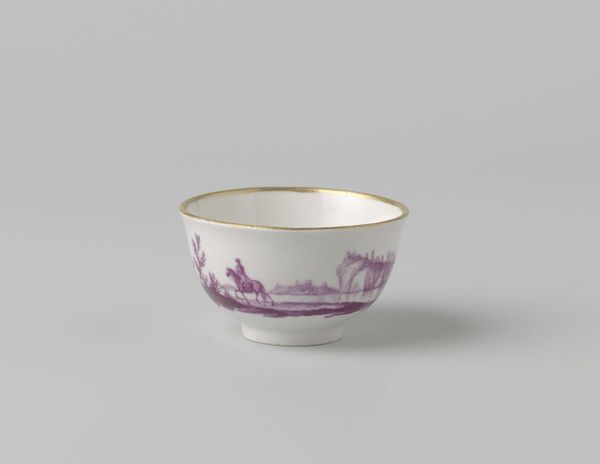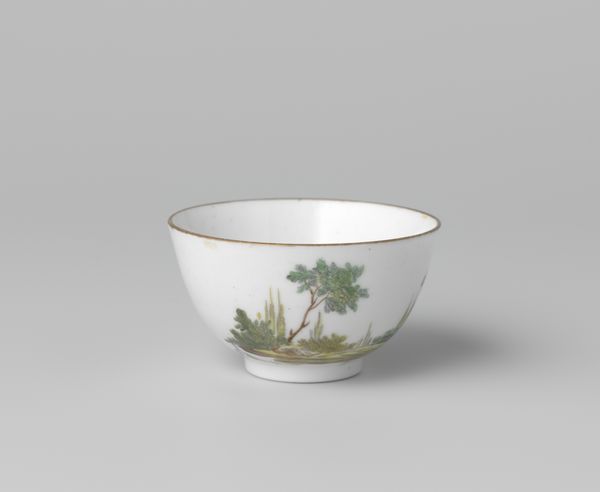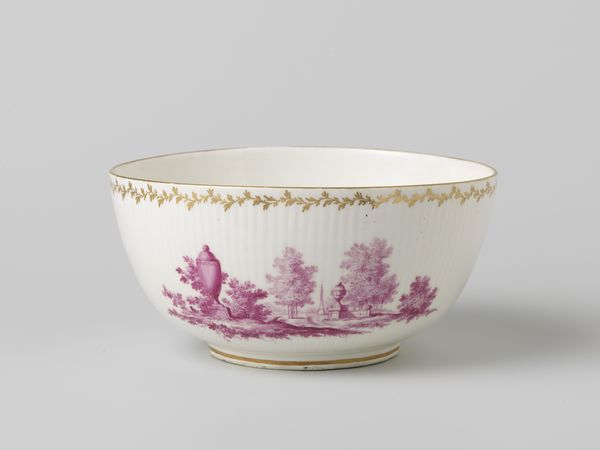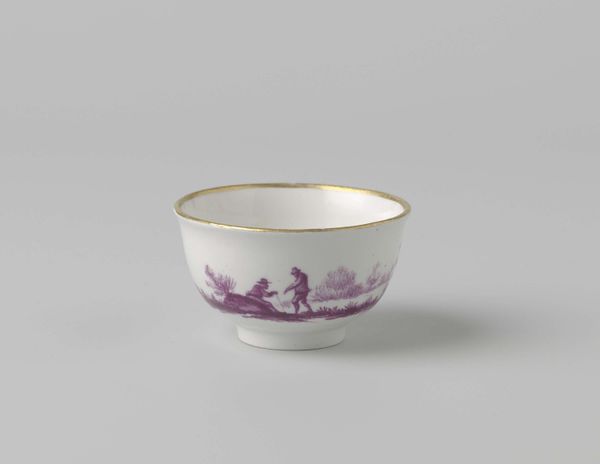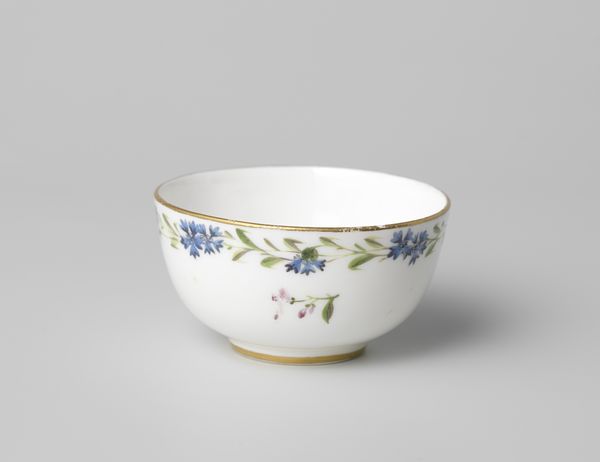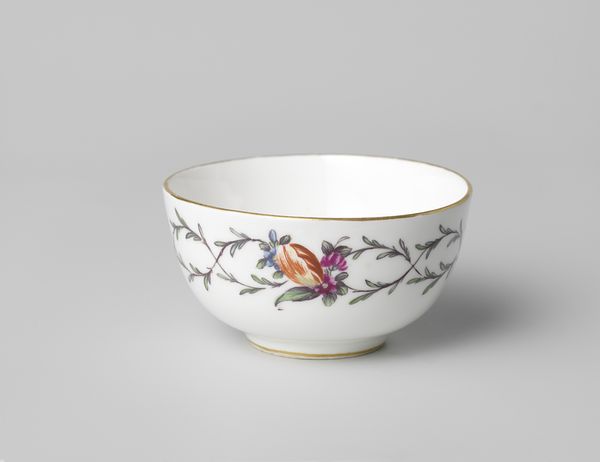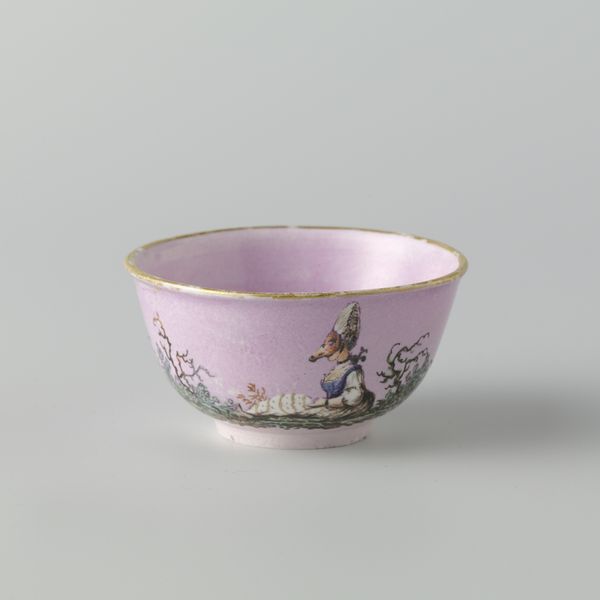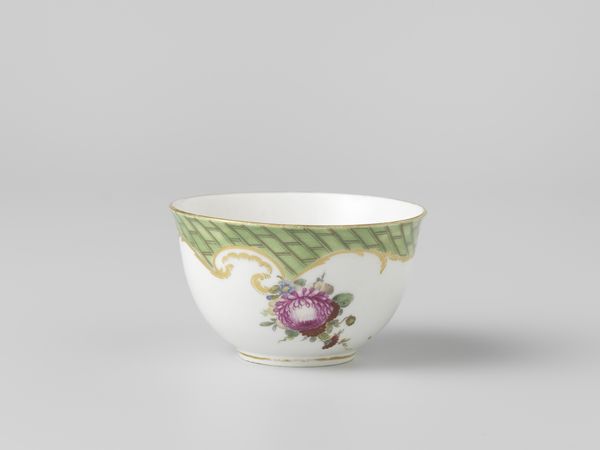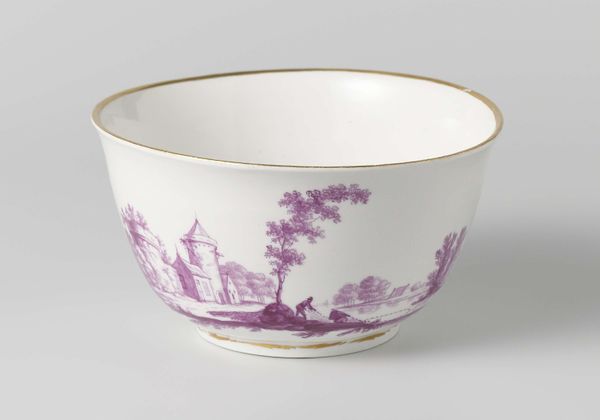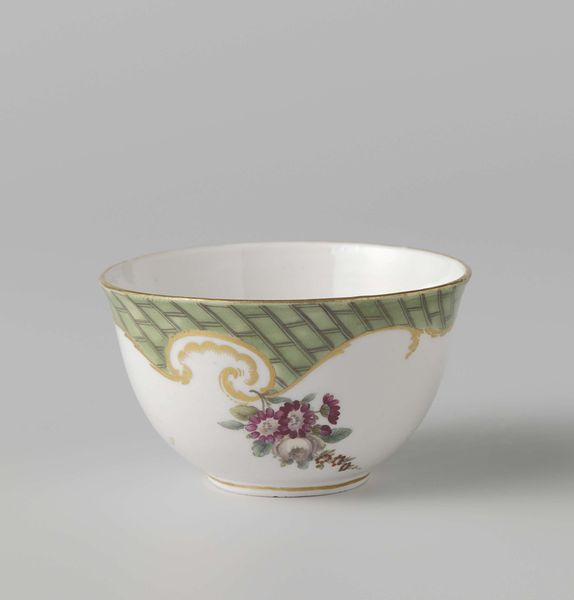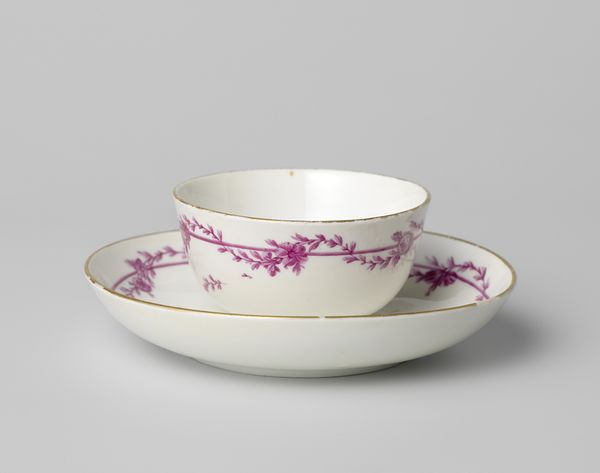
Dimensions: height 3.9 cm, diameter 6.9 cm
Copyright: Rijks Museum: Open Domain
Editor: This is "Part of a tea service" created around 1774-1778 by Loosdrecht, a delicate porcelain piece held in the Rijksmuseum. I’m struck by how this everyday object is elevated through miniature landscape paintings. What do you see in this piece? Curator: This piece speaks volumes about 18th-century consumption and class. Consider the porcelain itself— a highly desirable material at the time. What do the landscape paintings represent, and for whom was this luxury item produced? Editor: The imagery is Rococo and miniature: a figure fishing in a peaceful landscape. It makes me think of leisure. The landscapes are not just decoration; they seem to evoke a certain lifestyle. Does the labour of the artist contrast with that lifestyle? Curator: Precisely! The idyllic imagery conceals the labour involved in both the porcelain production and the artist’s miniature work. How does the object reinforce the status of its owner? And does it do anything to promote awareness and/or concealment of this imbalance of labour? Editor: It’s interesting that such a refined object speaks to labour and material conditions that would seem opposed to that refinement. Does considering these oppositions highlight anything that would not be apparent from the beautiful miniature landscape painting itself? Curator: Exactly! By considering the material production and social context of an artwork, we can begin to challenge accepted notions of both "high art" and the social hierarchy it reflects. What did this conversation illuminate for you? Editor: It really deepened my understanding of how everyday objects like this tea service can be read as historical and social documents. Thanks for pointing out these aspects! Curator: And for me, it is always useful to consider how material constraints and consumption impact artistic creation.
